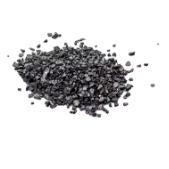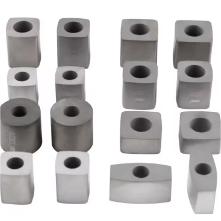**Title: The Secret Metal Behind Your Shiny Silver Plated Flatware**
(What Kind Of Metal Was Used In Silver Plated Flatware)
Ever admire the gleam of silver plated flatware? It looks like real silver, feels substantial, but costs much less. The secret isn’t magic. It’s the clever metal hiding underneath that thin layer of silver. What metal gives this everyday elegance its strength and affordability? Let’s uncover the truth behind your tableware.
**1. What is the Base Metal in Silver Plated Flatware?**
The foundation of most silver plated flatware isn’t fancy. It’s usually a specific alloy called **nickel silver**. Don’t let the name fool you. Nickel silver contains zero actual silver. Its main ingredients are copper, nickel, and zinc. Think of it like this: copper provides the base, zinc adds hardness and helps with casting, nickel gives it that silvery-white color and extra strength.
Sometimes, especially in older pieces or specific modern items, you might find copper itself as the base. Copper is cheaper and easier to shape. It lacks the bright white look of nickel silver. Copper shows through the silver plating more easily as it wears, giving a pinkish hue.
Why these metals? They form a solid, durable base. They hold the thin layer of real silver applied later. They resist bending and denting during normal use. They also conduct heat well, important for handling hot food. The base metal provides the structure; the silver plating provides the beauty and some tarnish resistance.
**2. Why Use Nickel Silver Under the Silver Plating?**
Using nickel silver makes perfect sense for manufacturers and users. First, cost. Real solid silver is expensive. Using a base metal like nickel silver drastically cuts the price. This makes beautiful tableware accessible to many more people.
Second, performance. Nickel silver is strong. It doesn’t bend easily when you cut your steak. It holds up to daily use and dishwasher cycles (though gentle washing is always better). Its hardness means the underlying metal won’t deform easily.
Third, appearance. Nickel silver naturally looks silvery-white. This is crucial. If the base metal were yellow (like brass) or reddish (like copper), that color would show through the thin silver plating much faster, especially at the edges of forks and knives. Nickel silver provides a neutral, bright background. This makes the silver plating look richer and more convincing. It also means minor wear is less noticeable initially.
Fourth, manufacturing. Nickel silver flows well when molten. This makes it excellent for casting intricate patterns and details into knife handles or spoon bowls. It’s also easy to polish to a smooth finish before the silver plating is applied.
**3. How is Silver Applied to the Base Metal?**
The process of creating silver plated flatware is fascinating. It’s called electroplating. Think of it like giving the base metal a very thin, very even coat of real silver paint using electricity.
First, the base metal pieces (forks, spoons, knives) are meticulously cleaned. Any dirt, grease, or oxide film will ruin the plating. They are polished smooth.
Next, the clean pieces are dipped into a special chemical bath. This bath contains dissolved silver ions and other chemicals. The pieces are attached to a negative electrical charge (the cathode). Solid silver bars are also placed in the bath, attached to a positive charge (the anode).
When electricity flows, a chemical reaction happens. The silver ions in the solution are attracted to the negatively charged base metal pieces. They stick to the surface, forming a solid layer of pure silver. The solid silver bars slowly dissolve, replenishing the silver ions in the bath.
The key is control. The time the piece spends in the bath and the strength of the electrical current determine how thick the silver layer becomes. For good quality silver plated flatware, this layer is measured in microns (thousandths of a millimeter). It’s incredibly thin, but vital for the look and function. After plating, the pieces are rinsed, dried, and often polished again for maximum shine.
**4. Applications of Silver Plated Flatware**
Silver plated flatware shines in many settings. Its beauty and affordability open doors.
* **Everyday Elegance:** Many families use it daily. It elevates a regular dinner. It feels special. It withstands regular use better than cheap stainless steel with fake chrome finishes that chip.
* **Formal Dining & Entertaining:** It’s the star of holiday dinners, dinner parties, and celebrations. The traditional patterns and gleaming surface create a sense of occasion. Large sets are common for serving many guests.
* **Restaurants & Catering:** Upscale establishments often use silver plated flatware. It provides the luxurious look of sterling silver without the astronomical cost and security concerns. It’s durable enough for professional kitchen cleaning (though care is needed).
* **Hotels & Event Venues:** Banquet halls and luxury hotels rely on it. It creates a high-end atmosphere for weddings, conferences, and galas. Its durability handles frequent use and industrial washing.
* **Collecting & Heirlooms:** Vintage and antique silver plated flatware is highly collectible. Intricate patterns from the Victorian era or Art Deco period are sought after. While not solid silver, well-maintained pieces hold sentimental and aesthetic value, often passed down.
* **Gift Giving:** Silver plated flatware sets make classic wedding, anniversary, or housewarming gifts. They offer lasting beauty and practical use.
**5. Silver Plated Flatware FAQs**
People often have questions about their silver plated treasures. Here are some common ones:
* **Is it real silver?** Yes and no. The thin outer layer is pure silver. The main body is base metal (usually nickel silver). It’s not solid silver like sterling.
* **Will it tarnish?** Yes. The silver layer can tarnish (darken) when exposed to sulfur in the air (from eggs, rubber bands, pollution) or moisture. Regular polishing keeps it shiny. Tarnish doesn’t harm the metal underneath.
* **Is it dishwasher safe?** Technically, often yes, but it’s not recommended. Harsh detergents and high heat in dishwashers accelerate tarnishing and can wear down the thin silver plating faster over time. Hand washing with mild soap and warm water is best. Dry immediately.
* **Can it be repaired if worn?** Re-plating is possible. A specialist can strip off the old, worn silver layer and apply a new one. This is common for restoring antique pieces or cherished family sets. It’s not usually cost-effective for modern, inexpensive flatware.
* **Why do some spots look pink or coppery?** This means the thin silver plating has worn through completely in those spots. The underlying base metal (copper in nickel silver, or pure copper if that’s the base) is showing. High-friction areas like fork tines or knife edges wear fastest. This is normal with age and use. Gentle handling and avoiding abrasive cleaners slows this down.
(What Kind Of Metal Was Used In Silver Plated Flatware)
* **How do I know the quality?** Look for markings. Reputable makers often stamp the piece. Look for words like “Silver Plated,” “EP” (ElectroPlated), “EPNS” (ElectroPlated Nickel Silver), or “EPBM” (ElectroPlated Britannia Metal, similar to nickel silver). Sometimes a number like “A1” indicates quality. Heavier pieces generally have thicker plating.
Inquiry us
if you want to want to know more, please feel free to contact us.


